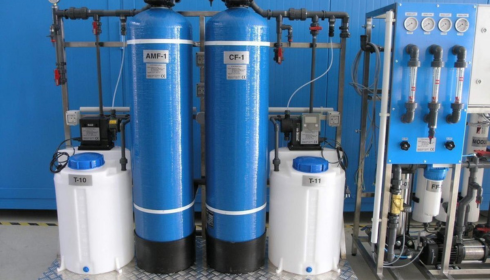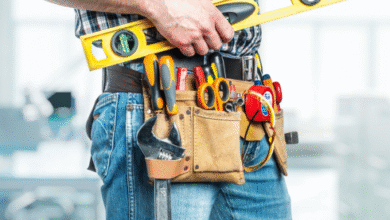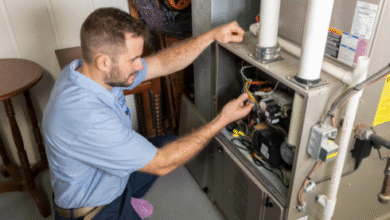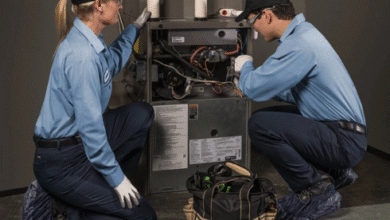Clean Water at Home: Why Smarter Treatment Systems Matter More Than Ever

There’s something quietly comforting about turning on the tap and knowing the water that flows out is safe, clean, and good for your family. Yet for many people, that peace of mind isn’t guaranteed anymore. Aging infrastructure, hidden contaminants, and the growing awareness of what’s really in our drinking water have nudged more households toward installing filtration and purification setups. And let’s be honest—nobody wants to drink water that tastes faintly metallic, smells off, or leaves residue on dishes.
For years, people leaned on the old adage, “If it’s clear, it’s clean.” But clarity can be misleading. The truth is, water might look fine but still carry things you don’t want in your body—excess minerals, chemicals, or even microscopic particles that slowly affect health. That’s where modern home solutions step in, offering not just convenience but actual confidence. Families today want Trusted water systems that deliver on their promise every single day, without fuss, without hidden surprises.
The Unseen Problem Beneath the Surface
One of the trickiest issues with water is that many contaminants are invisible. Take iron, for example. If you’ve ever noticed rusty stains in your sink or that odd metallic aftertaste in your drinking glass, you already know how frustrating it can be. Iron itself isn’t inherently dangerous in small amounts, but it can ruin plumbing fixtures, stain laundry, and make your morning coffee taste like pennies.
That’s why an Iron removal filter can feel like a small miracle for households battling this particular nuisance. By targeting and filtering out excess iron, these systems don’t just improve water quality—they restore your confidence in using it for cooking, drinking, and everyday living. It’s one of those upgrades that pays for itself by saving you from constant scrubbing, replacing stained clothes, or silently enduring that metallic tang.
Why Taste and Trust Go Hand in Hand
Water is more than just hydration—it’s the foundation of everything we eat and drink at home. Think about how many times a day water shows up in your routine: brewing coffee, boiling pasta, rinsing vegetables, filling your kid’s bottle, even just quenching your own thirst. If the quality isn’t right, it trickles into everything else.
People often notice the difference the moment they switch. Clean, treated water tastes fresher, feels lighter, and oddly enough, even encourages you to drink more. It’s like flipping a switch: suddenly, you’re not tolerating water—you’re enjoying it. And that subtle shift matters. Better-tasting water nudges healthier habits, which ripple out into your overall lifestyle.
The Role of a Full Water Treatment Setup
Now, filtration isn’t just about removing iron or chlorine. Every home has its own cocktail of water challenges, depending on location, pipes, and even seasonal changes. That’s where a complete Water treatment system comes in. Instead of tackling one problem at a time, these setups are designed to handle multiple concerns—hardness, odor, sediments, and more—giving you a one-stop solution.
The beauty of it is you don’t have to be a water scientist to benefit. Modern systems are sleek, efficient, and often smart enough to self-regulate. Gone are the days of clunky equipment hidden in basements that needed constant attention. Today’s versions quietly do their job in the background, leaving you with smooth showers, spot-free dishes, and healthier water straight from the tap.
Beyond the Practical: The Emotional Relief
It’s easy to talk about numbers, contaminants, and features, but there’s also the emotional layer people rarely mention. Knowing your water is clean relieves a quiet but constant anxiety. Parents worry less about their kids filling bottles directly from the sink. Guests are offered a glass without hesitation. Even cooking feels less compromised when you know the base ingredient—water—is genuinely safe.
That kind of peace of mind doesn’t show up in product specs, but it might just be the most valuable part of the entire setup. Water should feel natural, not questionable. And once you’ve experienced that, it’s nearly impossible to go back.
Small Steps Toward a Bigger Impact
Here’s the thing: improving water quality at home isn’t just about personal comfort. Every gallon of clean water that comes from a tap instead of a single-use bottle makes a dent in plastic waste. It’s one of those rare changes where personal benefit overlaps neatly with environmental responsibility. You save money, avoid lugging bottles from the store, and cut down on waste—all in one decision.
And let’s not overlook the long-term protection for your house itself. Clean water keeps plumbing healthier, extends the life of appliances like dishwashers and washing machines, and prevents buildup that slowly eats into efficiency. It’s not just about what you taste—it’s about what you don’t see happening behind the walls.
Wrapping It Up
Water quality may not be the flashiest topic, but it’s one of those essentials that shapes daily life in more ways than we notice. Whether it’s eliminating iron stains, avoiding chemical aftertastes, or simply trusting that what’s coming out of the faucet is truly good for you, these systems make a world of difference.




